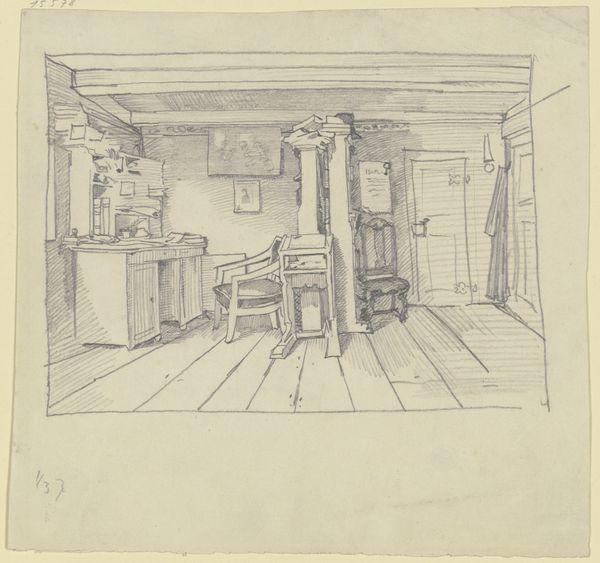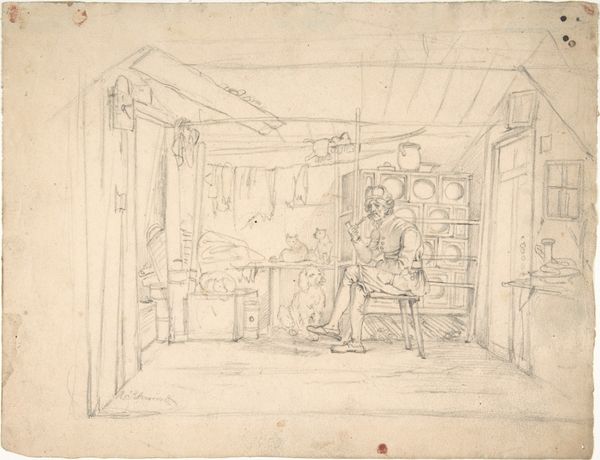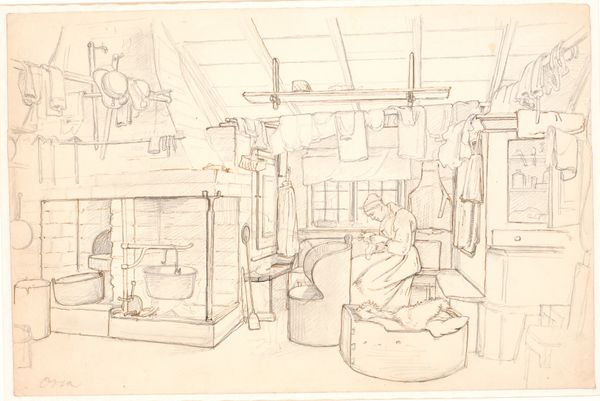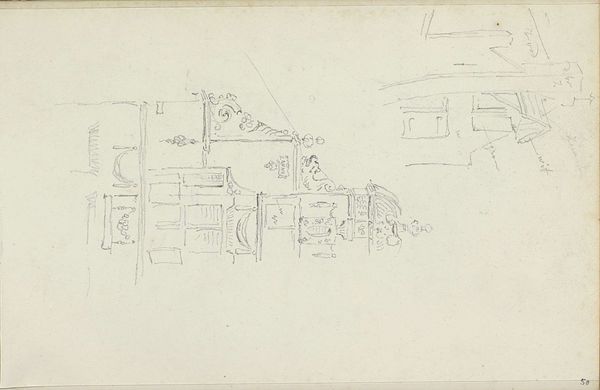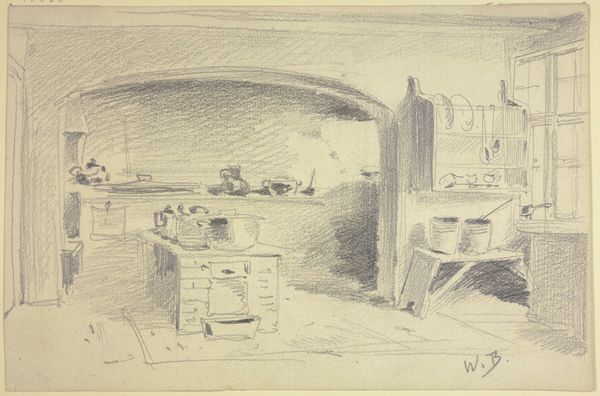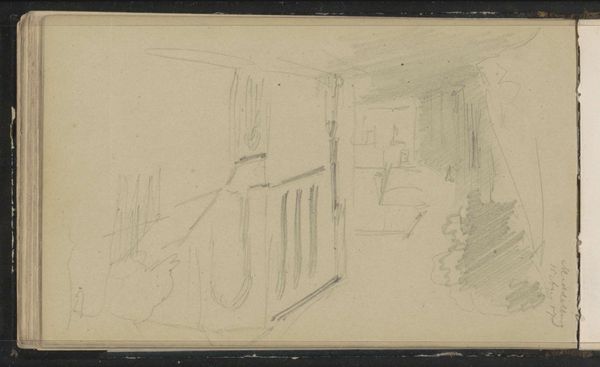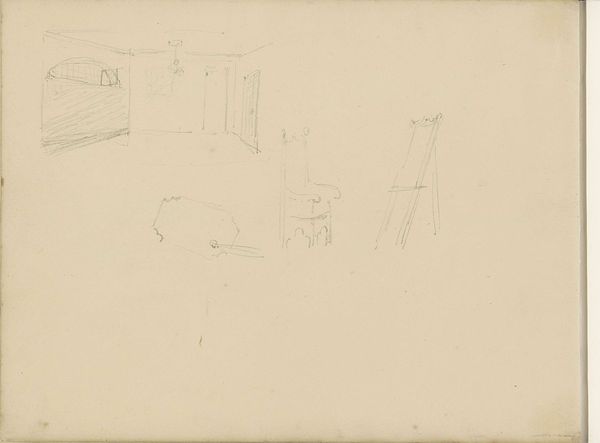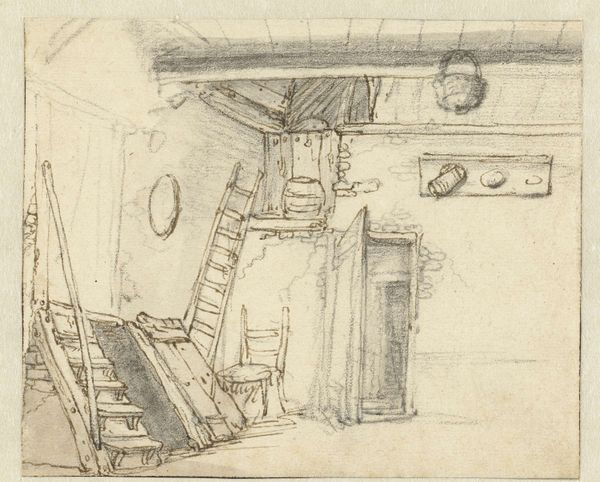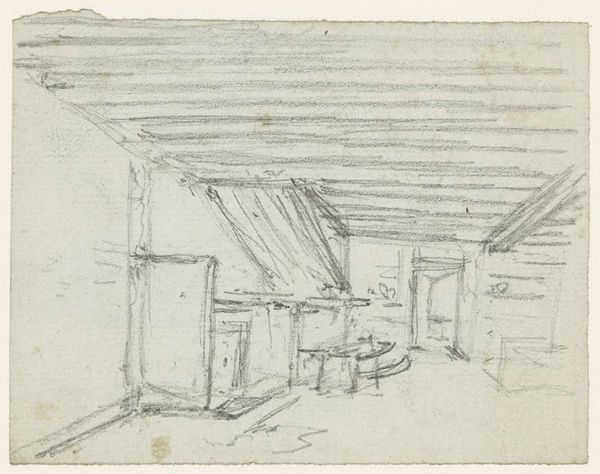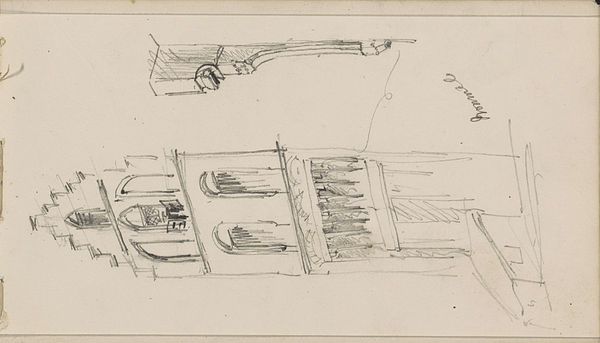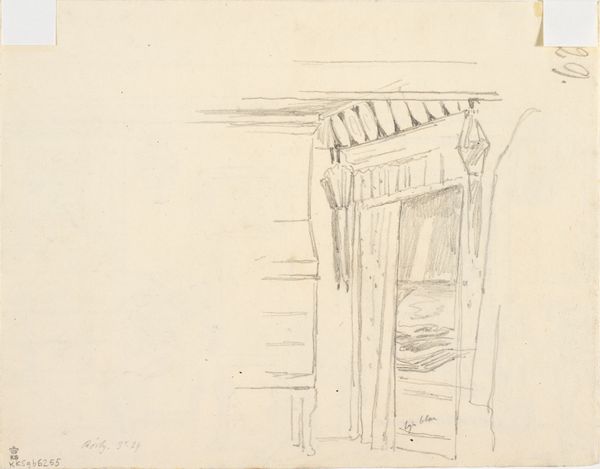
Copyright: Public Domain
Curator: This pencil drawing by Wilhelm Busch, made sometime between 1855 and 1857, depicts an interior scene—'Stube mit Spinnrad und kleinem Hund.' Editor: It’s all rather dreamlike, isn't it? The wispy lines and the diffused light lend the scene a sense of quiet introspection, like a half-remembered memory. Curator: The domestic interior, as a theme, experienced considerable interest at the time, but you can still feel Busch's individual flair. It’s not just a drawing, but an emotion, don’t you agree? Editor: Absolutely. Look at the placement of objects. The spinning wheel, of course, evokes time, patience, and the weaving of fate, connecting to ancient mythologies and the eternal feminine. The little dog feels utterly real. Curator: I suppose he helps anchor the whole piece in reality, preventing it from spiralling too far into abstraction. Editor: Possibly, but the dog could also be interpreted as a symbol of fidelity, domesticity, even a hint of watchfulness against unseen threats. Think Cerberus, guardian of the underworld! Although, admittedly, this chap is less intimidating and more 'mildly curious.' Curator: (laughs) Indeed! Then we have all these stacked forms which seem a bit wobbly somehow... is it just me? I sense here also that feeling, almost ubiquitous in art, that even the most solid-looking things can soon topple down if we're not careful. Editor: The impermanence of material existence, rendered so delicately... I think Busch, with just a few lines, hints at deeper currents running beneath the surface of the everyday. Curator: Well, next time I want to illustrate the impermanence of everything, I will remember Busch. Editor: Next time, maybe, you'll pick up a pencil and surprise us all. I, for one, certainly learned a few tricks to suggest symbolism, and maybe even conjure a small familiar spirit—a house elf in the making, perchance.
Comments
No comments
Be the first to comment and join the conversation on the ultimate creative platform.
